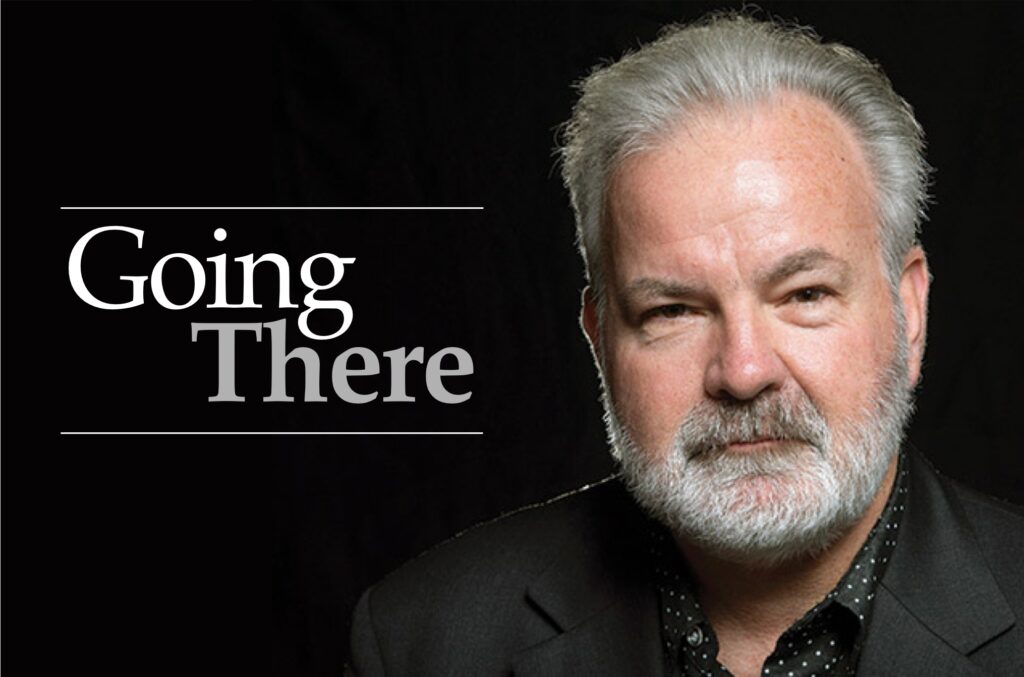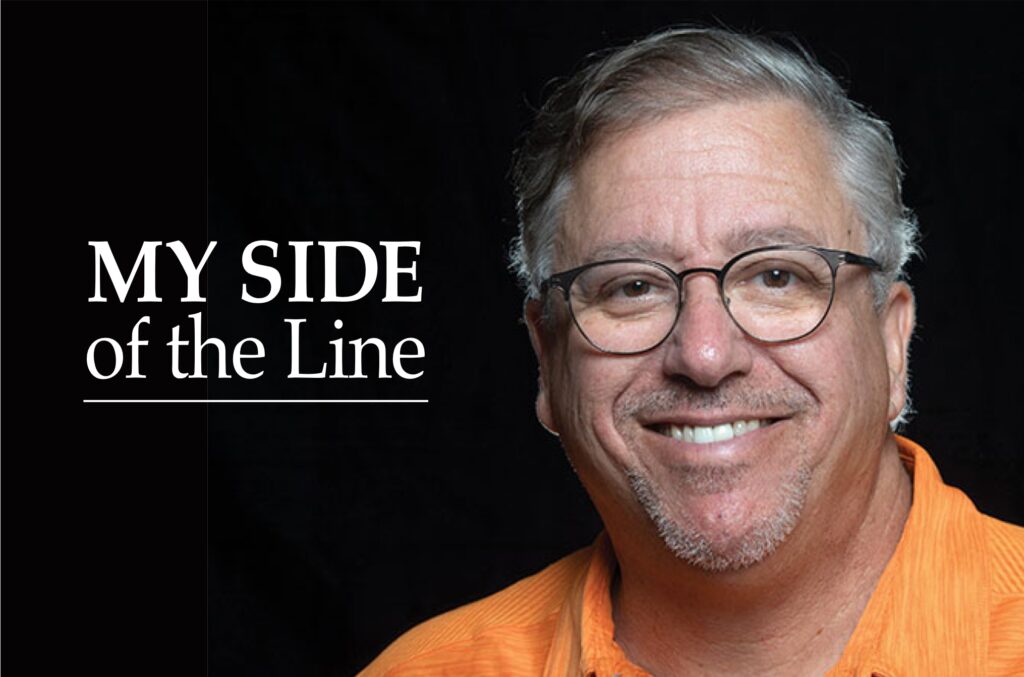On campus, lots of words and (hopefully) action
She asked, in so many words, how CMC could be more inclusive and more welcoming to students of different racial backgrounds, when the students there were basically trained to “go out and make money off of brown people.”
Yep, something, as Eric Clapton sung, is happening.
I was hearing the Clapton song in my head before the student stood and asked the question at the after-dinner presentation at the Athenaeum at Claremont McKenna College when I went to see W. Kamau Bell, the third person to speak at the china-and-tablecloth dining room at the Ath.
The black comic, best-known for his television show Totally Biased, asked three times when it is appropriate to wear blackface and answered with a slide saying, “1. Never. 2. F**KING NEVER. 3. When you actually have a black face.” Except he didn’t have the ** on the slide.
In his presentation entitled “W. Kamau Bell Curve: Ending Racism in About an Hour,” riffing off a controversial work on black student achievement and affirmative action, Mr. Bell showed the now-infamous photograph of the CMC students partying in Mexican garb. The nervous giggles and gasps it brought forth in the audience were very much part of his point. He also explained that asking to touch a black person’s hair or how a black person washes his or her hair is not okay.
So I shouldn’t have been surprised when, the next evening at the Athenaeum, the student stood up during the Q and A and asked, more or less, how the college can be more welcoming to students of color when the college is known for holding up the white power structure. Yes, something is happening.
At least it looked like that was the point that evening. The topic after dinner was what a resource center and gathering space for minority students on the CMC campus could or should look like. In short, this was a brain-storming session, so the student’s challenging, lightning bolt question wasn’t inappropriate, wasn’t so out-of-place.
The discussion was lead by a panel of directors of centers on other campuses: Sumi Pendakur, associate dean of institutional diversity at Harvey Mudd College; Yuka Ogino, interim director of SCORE at Scripps College and Marianna Cruz, former chief diversity officer and director of the Multicultural Resource Center at Amherst College. The moderator was Nyree Gray, chief civil rights officer and Title IX Coordinator at CMC.
The presence of these directors sent a message. That these other colleges, including right next door here in Claremont, have resource centers and personnel for minority students said a lot. So does CMC having a chief civil rights officer and Title IX Coordinator.
It means that the issue of how students from different backgrounds are welcomed and treated on campus is an important one and should be taken seriously. And it means that there is work to be done at CMC.
That evening, the students were encouraged by Ms. Gray and the panelists to ask questions, to share ideas and to write down suggestions. They were asked to think about and envision how CMC can have space for minority students. And if that space needs to be separate. Does there need to be a “safe space” on campus for minority students, or do minority students need to feel safe on the whole campus?
Just as this is a vital, paramount issue, it is also thorny and complicated, touching many nerves. And it became an all-too-real issue at the college when, late last semester, some students ended up not feeling safe on campus at all and stayed away.
This happened after there were headline-grabbing protests on campus, leading to the dean of students resigning after writing in an email about students “who don’t fit the CMC mold.” Apparently, according to the Los Angeles Times at the time, there was a backlash, with snarky comments and also threats made on social media against the protesting students, driving some of them off campus.
As if the situation wasn’t bad enough before the protests.
No doubt about it: there are tough questions to ask and hard work to be done at CMC, and now is the time. As shocking as the student’s question about the college’s culture may have been, it was no more shocking than students feeling they couldn’t be on campus.
The panelists made it clear that it was why they were there that evening—to urge that the tough questions be asked and the hard work get started. It was also part of the message brought by Randall Kennedy to the Athenaeum a week or so later.
The Harvard Law School professor, who clerked for US Supreme Court Justice Thurgood Marshall and has written on race relations, spoke primarily about how the concept of race tends to be dealt with in two ways in this country. Some people advocate that race should be more or less ignored, that we should be a colorblind society, while others say we should not only acknowledge race but celebrate it, as in a mixed salad or a mosaic.
He also said there are people, like his own father and Malcolm X, who posit that that the different races will never get along in this country. Mr. Kennedy emphasized that others—like Frederic Douglas, Martin Luther King, President Obama and himself—have maintained that true racial harmony in this country is possible. It is also important, Mr. Kennedy concluded, that as part of their education as productive members of society and leaders, students speak up and take action when they see that these issues can be dealt with in a better way.
Michael S. Roth, the president of Wesleyan University who previously taught humanities at Scripps, had the same message when he spoke last week at the Ath on the value of a liberal education. He pointed out that one of the principle purposes of a liberal education was to instigate, encourage and provoke students to question, challenge and, if needed, take action in relation to what they see or are presented with. As Mr. Roth elucidated, this is the fourth and culminating value of a liberal education—as the student is liberated and animated by new knowledge, he or she can come together with others who are liberated and animated to cooperate.
A few evenings before, the Athenaeum hosted Ravi Aysola, a 1996 graduate of CMC. The UCLA assistant professor of medicine and physician specializing in pulmonary and sleep medicine had a particularly provocative and challenging message. He talked about being at the college when he was disabled, recovering from a major illness, and befriending a classmate who had mental health issues and ultimately committed suicide. He described how this experience at CMC, which is “not known for being compassionate,” made him a better doctor.
It certainly does sound like something is happening on the CMC campus. Hopefully, it’s more than a song and some nice, or not-so-nice, after-dinner talks and discussions.







0 Comments